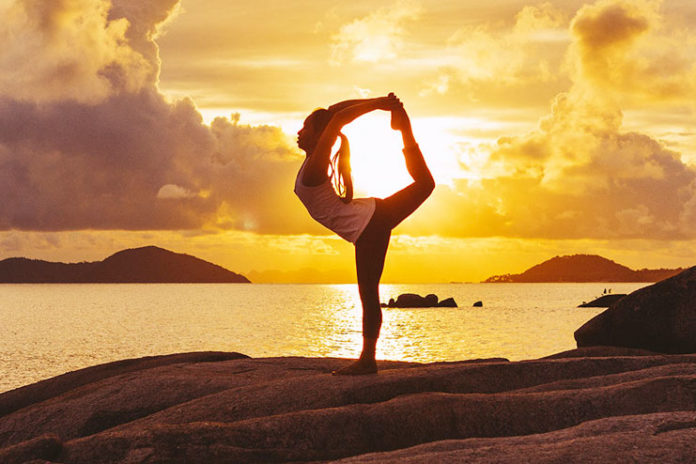Affiliate Disclaimer
Some links in this article are affiliate links. We may earn a small commission if you make a purchase through these links, at no extra cost to you. We only recommend products we find useful to our readersYoga is one of the amazing soul connecting exercise forms that is ever known to mankind. It can be difficult as well as it can be easy. By daily practicing, you can achieve a lot more than just a fit body. So here, are some yoga exercise routine for beginners that everybody must try.
Yoga Exercise Routine For Beginners
1Balasana or Child’s Pose
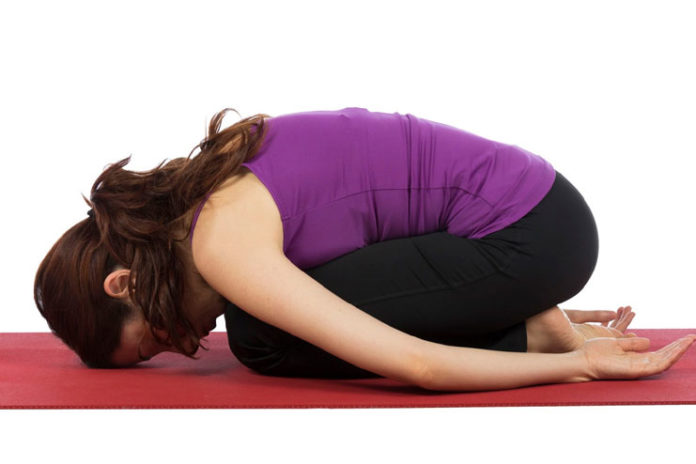
- First try to sit up comfortably on the heels.
- Then roll the torso forward, by bringing the forehead to rest on the bed in the front.
- Now lower the chest close to the knees as much comfortably as you can, extending the arms in front of you.
- Try to hold this pose and then breathe.
Benefits
- Balasana can help in stretching the hips, thighs, as well as ankles
- It can reduce the stress and the fatigue gently relaxing the front muscles of the body while softly as well as passively stretching of the back torso muscles.
- This pose centers, calms, as well as soothes the brain by making it a therapeutic pose for stress relieves.
- When it is performed with the head and torso supported. It can help relieving the pain from the back and neck.
- It is also sometimes used as a counter-pose to the back bend. Child’s Pose can restore the balance and equanimity to the body.
2Paschimothanasana or Seated Forward Bend
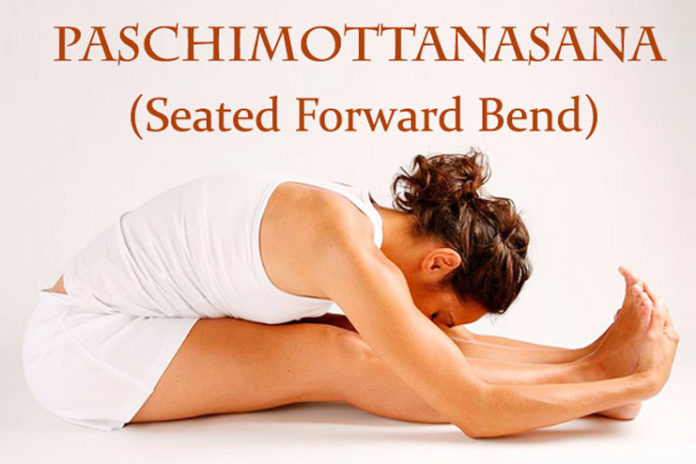
- Try to stretch both legs out in the front.
- While exhaling, try to walk the hands further out, bringing the chest close to the thighs.
- Remember to focus on lengthening the upper body, while bending. If you are unable to reach your toes, you can use a strap or even a towel and “pull” yourself forward.
- Try to hold the pose for 30 seconds.
Benefits
- It can help in relieving stress.
- It can help to reduce fatty deposits into the abdomen.
- It can remove anxiety, anger as well as irritability.
- It can calm down the mind.
- It can stretch the spine as well as bring flexibility.
- It is also good for constipation and any type of digestive disorder.
- It is useful to increase height.
- By regularly practicing, it can cure impotency and enhance sexual power.
- It can tone the abdominal pelvic organs.
- It can help balance the menstrual cycles.
This asana is also specifically recommended to women after child birth.
3Sarvangasana or Shoulderstand
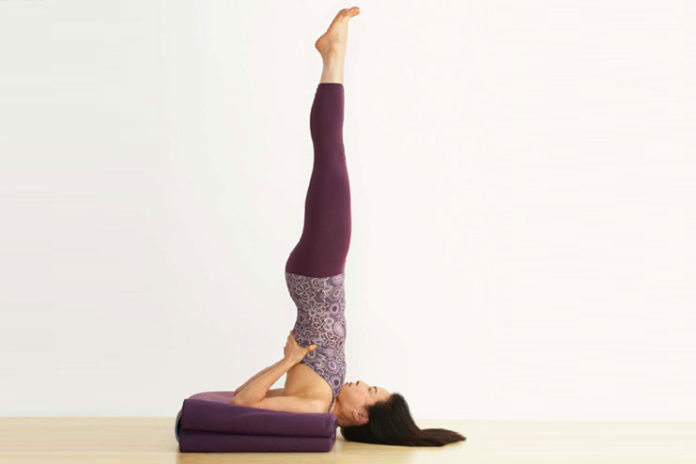
- First try to lie on the back with your hands on the side.
- Without any movement, try to lift the legs, buttocks and the back so that you can come up high on the shoulders. Remember to support the back with the hands.
- Now try to move the elbows closer towards each other, moving the hands along the back, creeping towards the shoulder blades. Try to keep straightening the legs and the spine by pressing down the elbows to the floor as well as the hands into your back.
- Remember to keep the legs firm. Lifting the heels higher as you try to put a footprint on the ceiling. Now bring the big toes straight over your nose. Now point your toes up, paying attention to the neck. Try not to press the neck into the floor. Instead keep your neck strong with a feeling of tightening the muscles slightly as well as pressing the sternum towardsthe chin. If you are feeling any kind of strain in the neck, immediately come out of the posture.
- Keep breathing deeply and also staying in the posture for at least 30-60 seconds.
- To come out, lower your knees to forehead. Then bring the hands to the floor, and the palms facing down. Without even lifting the head, slowly bring your spine down, completely to the floor. Lower the legs to the floor. Relaxing for at least of 60 seconds.
Benefits
- It can help to stimulate the thyroid as well as the parathyroid glands, normalizing the functions.
- It can strengthen the arms and shoulders and keep the spine flexible.
- It can nourish the brain with more blood flow.
- It can stretch the heart muscles by returning to the more venous blood on the heart.
- It can bring relief from constipation, indigestion, as well as varicose veins.
4Veerasana or Hero Pose
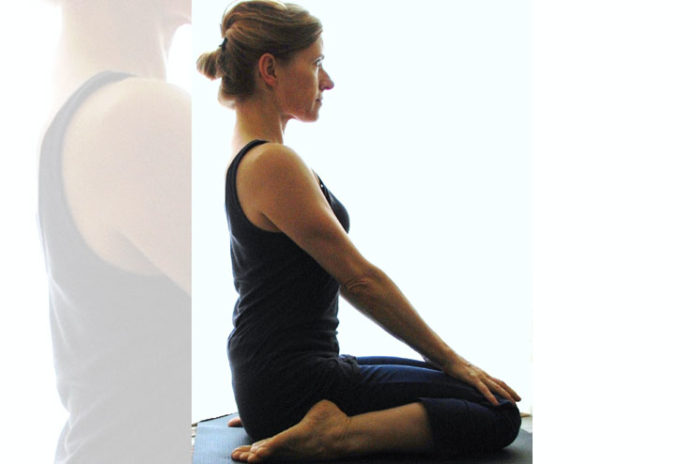
- First stand upright with the legs joined and arms by the sides, that is, in tadasana pose.
- Then step the left leg forward, stretching as much as possible. Remember to exhale while stretching the leg.
- Now bend the left knee into the form a 90 degree angle between your thigh and the calf. Keep the toes forward.
- In the position, leg, back, neck as well as both the hands can form a good arch in this posture. You must remember to weigh the body backward and keep the arms near to your ears. Also try to bend the neck down.
- Then join both the palms and place the hand on your left knee keeping the right leg as straighter as possible.
- While Inhaling, raise both the hands above the head stretching the arms further upwards.
- While bending the upper part of the body back, remember that the inner side of the upper arms must touch the ears.
- Your neck as well as head must bend down to maintain the balance of the body.
- Remember to keep the right leg straight, sole of both the feet on the ground.
- Maintain this pose for as long as possible until you are not feeling any strain. Gradually try to increase the duration of the practice.
- While slowly exhaling straighten your trunk. Bring your body forward and place the hands onto the left knee slowly.
- Inhale and slowly bring the hands down, keeping the knee straight and parallel to the right. Now step a little back on the left leg to stand upright in tadasana while you exhale. Straighten the knee and then restore the hands to its original place.
- Take some relaxing moment and perform veerasana again with the right leg stretched forward.
Benefits
- Veerasana can help to balance the mind, by increasing the concentration.
- Veerasana is also considered good for the kidneys, liver, reproductive, as well as abdominal organs health.
- This asana can help people with lost appetite, it can help to augment digestion.
- Veerasana can affect the circulatory system positively – the joints of the waist, legs, spinal column and the neck get curved into opposite direction resulting the blood circulation to these joints.
- Elasticity on the spinal column can improve leading to the better functioning.
- It can help on the better functioning of the digestive system.
- Veerasana can help to tone the thighs and calves, strengthen the shoulders, arms as well as legs.
- People who mostly suffer from any digestive problems, constipation as well as nervous problems must practice this asana.
Yoga Work Plan For Weight Loss





























